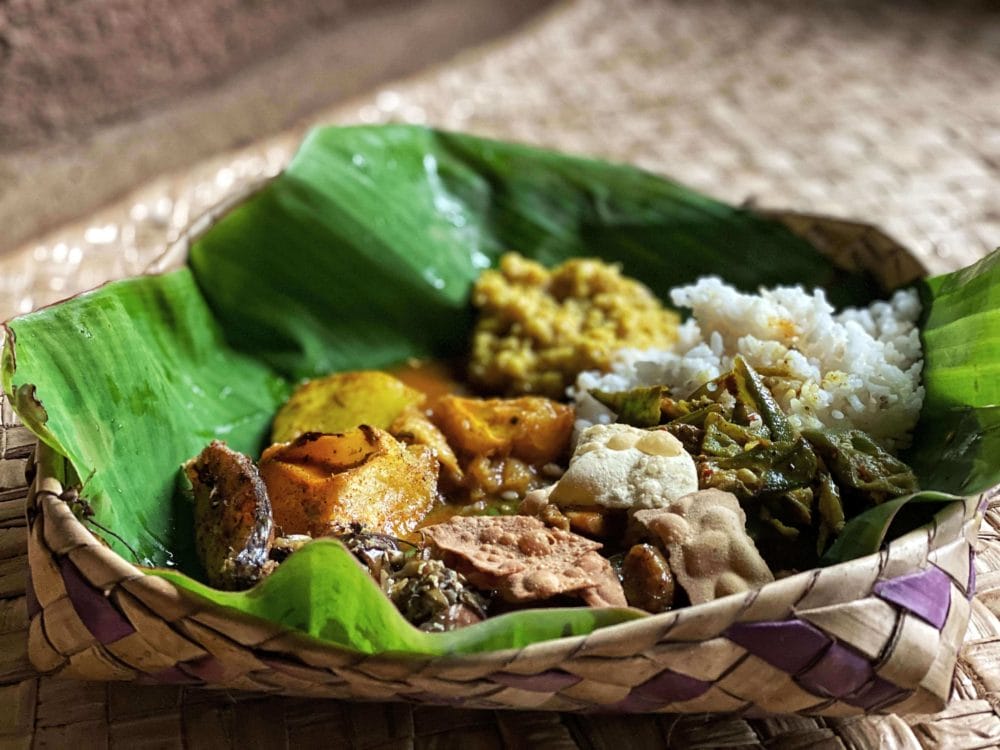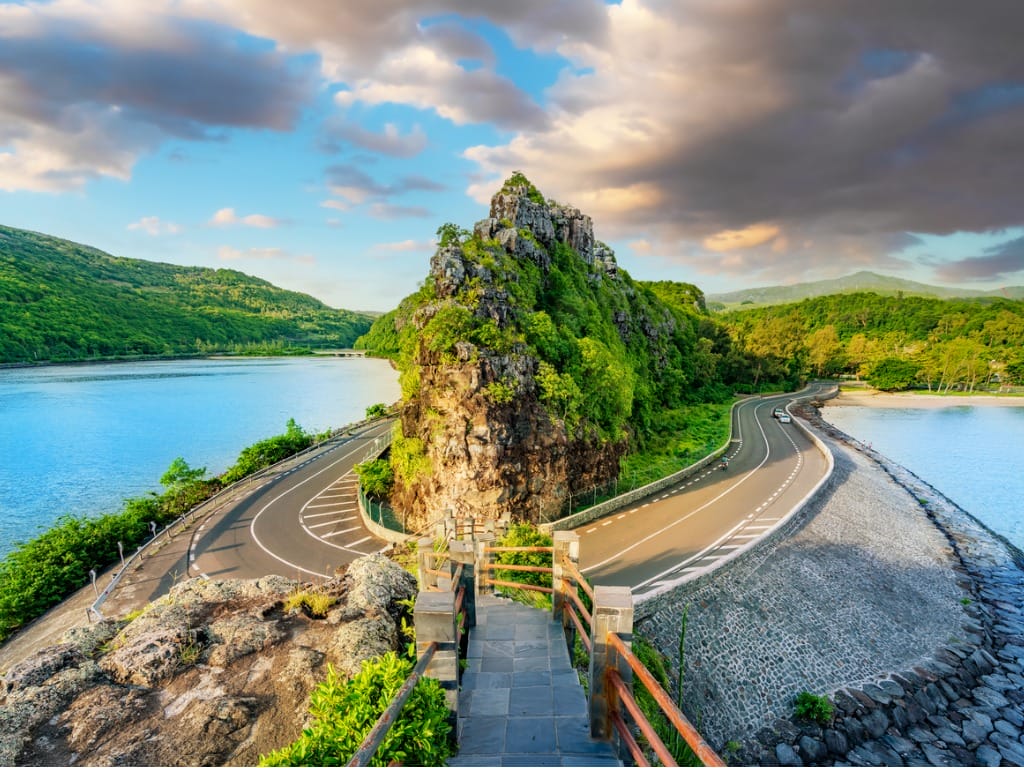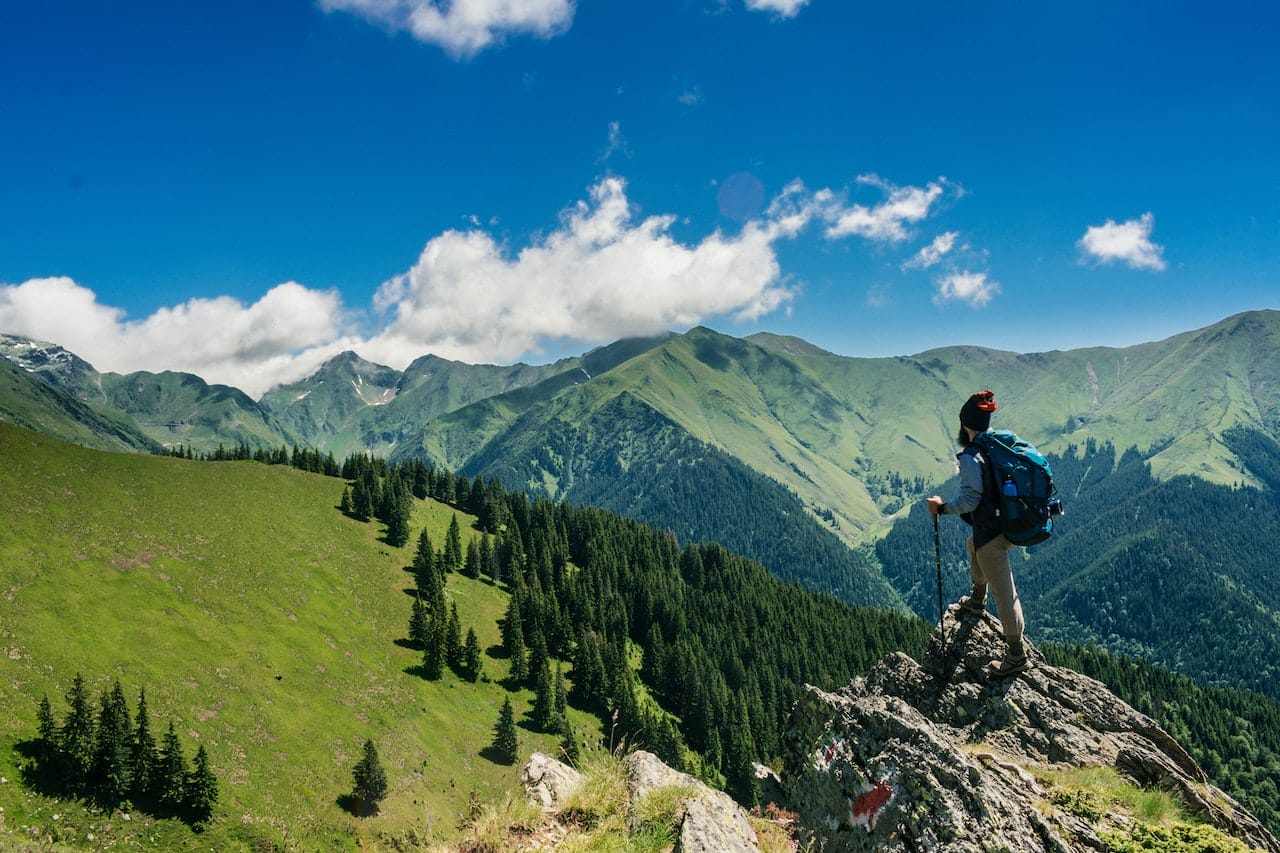Located in the Indian Ocean, Sri Lanka is a small tear-shaped island that is brimming with wonders waiting to be discovered. Its unique geographical position has made it a vital strategic point throughout history. With its rich cultural heritage, diverse natural landscape, flourishing economy, and tantalizing cuisine, Sri Lanka is a destination that offers something for everyone.
Geographical Overview
Strategically positioned in the Indian Ocean, Sri Lanka has long been a hub of maritime activity. Its location has made it a pivotal trading point in the ancient Silk Road and a gateway between East and West. The island’s shape, resembling a teardrop falling from the southern tip of India, adds to its mystical allure.
The teardrop shape gives Sri Lanka a diverse landscape that is unparalleled in its beauty. From lush rainforests and cascading waterfalls to pristine beaches and rolling hills, the natural wonders of this island paradise are endless.
Let’s delve deeper into the geographical features that make Sri Lanka truly remarkable.
Starting from the coastal areas, Sri Lanka boasts a coastline that stretches for approximately 1,340 kilometers. Along this coastline, you will find a multitude of stunning beaches, each with its own unique charm. From the golden sands of Negombo to the tranquil shores of Unawatuna, these beaches offer a haven for relaxation and water activities such as snorkeling, diving, and surfing.
Venturing inland, Sri Lanka’s landscape transforms into a lush green paradise. The island is home to an extensive network of national parks, nature reserves, and protected areas. The Sinharaja Forest Reserve, a UNESCO World Heritage Site, is a prime example of Sri Lanka’s rich biodiversity. This rainforest is teeming with endemic species of flora and fauna, making it a haven for nature enthusiasts and researchers alike.
As you journey further into the heart of Sri Lanka, you will encounter the majestic central highlands. This region is characterized by its picturesque tea plantations, mist-covered mountains, and cascading waterfalls. The town of Nuwara Eliya, often referred to as “Little England,” showcases the colonial-era architecture and offers a cool climate that is a stark contrast to the tropical heat of the coastal areas.
One cannot talk about Sri Lanka without mentioning its iconic cultural sites. The ancient city of Anuradhapura, dating back to the 4th century BC, is a UNESCO World Heritage Site that showcases the country’s rich history and architectural marvels. The rock fortress of Sigiriya, known as the “Lion Rock,” is another must-visit destination. Climbing to the top of this ancient citadel rewards visitors with breathtaking panoramic views of the surrounding countryside.
In conclusion, Sri Lanka’s geographical diversity is a testament to its natural beauty and cultural heritage. From its stunning coastline to its lush rainforests and ancient cities, this teardrop-shaped island offers a myriad of experiences for every traveler. Whether you seek relaxation, adventure, or a glimpse into the country’s rich history, Sri Lanka has it all.
The Rich Cultural Heritage
Sri Lanka, known as the “Pearl of the Indian Ocean,” is a country that is not only blessed with breathtaking natural beauty but also a vibrant cultural heritage deeply rooted in its longstanding Buddhist traditions. The influence of Buddhism can be seen in every aspect of Sri Lankan life, making it a truly unique and fascinating destination for travelers.
One of the most striking features of Sri Lanka’s cultural heritage is its majestic temples that dot the landscape. These temples, known as “viharas,” are not only places of worship but also architectural marvels that showcase the country’s rich artistic traditions. The intricate carvings, vibrant paintings, and elaborate sculptures found within these temples are a testament to the remarkable creativity and craftsmanship of the Sri Lankan people.
Every day, the people of Sri Lanka engage in various rituals that are deeply rooted in their Buddhist beliefs. One such ritual is the act of offering alms to Buddhist monks, known as “pindapata.” This ancient practice involves devotees preparing food and other essentials and offering them to the monks as a way of earning merit and practicing generosity. Witnessing this sacred ritual is not only a humbling experience but also a glimpse into the deep spiritual connection that the Sri Lankan people have with their cultural heritage.
Aside from its spiritual heritage, Sri Lanka also boasts a rich tradition of art and architecture that dates back centuries. The country’s ancient ruins, such as the iconic Sigiriya rock fortress, stand as testaments to the island’s glorious past. The architectural brilliance and engineering marvels of these structures never fail to captivate visitors, leaving them in awe of the ingenuity and skill of the ancient Sri Lankan civilization.
Furthermore, Sri Lanka’s cultural heritage extends beyond its religious and architectural wonders. The country has a rich tradition of performing arts, with various dance forms and folk traditions that showcase the vibrant and diverse cultural tapestry of the island. Traditional dances like the Kandyan dance, characterized by its rhythmic movements and elaborate costumes, are not only a visual treat but also a way for the Sri Lankan people to preserve and celebrate their cultural identity.
Sri Lanka’s cultural heritage is a treasure trove of history, spirituality, and artistic brilliance. Its longstanding Buddhist traditions, majestic temples, ancient ruins, and vibrant performing arts all contribute to the rich tapestry of the island’s cultural identity. Exploring the cultural heritage of Sri Lanka is not only a journey through time but also a profound experience that allows one to appreciate the remarkable creativity and resilience of its people.
Exploring Sri Lanka’s Natural Riches
Blessed with an astonishing level of biodiversity, Sri Lanka is home to numerous wildlife sanctuaries and national parks that showcase its ecological treasures. These biodiversity hotspots are havens for a myriad of species, including elephants, leopards, and a wide variety of bird species.
One of the most famous wildlife sanctuaries in Sri Lanka is Yala National Park. Spanning over 979 square kilometers, it is home to the highest concentration of leopards in the world. Visitors to Yala National Park can embark on thrilling safari adventures, where they have the chance to spot these majestic big cats in their natural habitat. The park is also home to elephants, sloth bears, and a rich diversity of birdlife, making it a paradise for nature enthusiasts and wildlife photographers.
Another must-visit destination for nature lovers is Sinharaja Forest Reserve. Recognized as a UNESCO World Heritage Site, this tropical rainforest is a treasure trove of endemic species. As you wander through the dense foliage, you’ll be surrounded by the melodious calls of colorful birds, such as the Sri Lanka blue magpie and the red-faced malkoha. Sinharaja Forest Reserve is also home to the elusive purple-faced langur, a rare primate found only in Sri Lanka.

However, it is not just the wildlife that makes Sri Lanka’s natural beauty so captivating. The island also boasts an extensive coastline lined with pristine beaches that offer visitors an idyllic tropical escape. Whether diving in the crystal-clear waters or simply basking in the sun, Sri Lanka’s beaches are an invitation to relaxation and tranquility.
One such beach is Mirissa, a small coastal town known for its breathtaking beauty. With its golden sands and turquoise waters, Mirissa is a paradise for beach lovers. It is also a popular spot for whale watching, as the warm waters surrounding the area attract a variety of whale species, including the majestic blue whale, the largest animal on Earth.
For those seeking a more secluded beach experience, Tangalle is the perfect destination. Located on the southern coast of Sri Lanka, Tangalle is home to pristine beaches framed by coconut palm trees. The tranquil atmosphere and gentle waves make it an ideal spot for swimming and sunbathing. Nature lovers can also explore nearby Rekawa Beach, a nesting site for endangered sea turtles.
As you venture further along Sri Lanka’s coastline, you’ll come across Arugam Bay, a surfer’s paradise. Known for its world-class waves, Arugam Bay attracts surfers from around the globe. Whether you’re a beginner or an experienced surfer, the consistent breaks and warm waters make it a dream destination for riding the waves.
From the lush rainforests to the pristine beaches, Sri Lanka’s natural riches are truly awe-inspiring. Whether you’re an avid wildlife enthusiast or simply in search of a tropical getaway, this island nation has something to offer everyone. So pack your bags, immerse yourself in the beauty of Sri Lanka, and create unforgettable memories in this paradise of natural wonders.
Economic Landscape
Tea has played a significant role in Sri Lanka’s economy for centuries. The fertile highlands of the central region are renowned for producing some of the finest teas in the world. Ceylon tea, as it is known, is exported globally and has become synonymous with Sri Lanka.
The tea industry in Sri Lanka has a rich history that dates back to the British colonial era. It was during this time that the British introduced commercial tea cultivation to the island, transforming it into a major player in the global tea market. The cool climate and high altitude of the central highlands, combined with the expertise of local tea growers, have contributed to the production of high-quality teas that are sought after by tea connoisseurs worldwide.
Today, Sri Lanka is the fourth-largest tea producer in the world, with tea plantations covering vast stretches of land in the central and southern regions of the country. The industry employs a significant portion of the population, providing livelihoods for thoUnited Statesnds of workers and their families. Tea estates are not only places of work but also vibrant communities with their own schools, healthcare facilities, and social infrastructure.
In recent years, the tourism sector has also emerged as a crucial player in Sri Lanka’s economic landscape. Visitors from around the world are drawn to the country’s natural beauty, cultural heritage, and warm hospitality. The pristine beaches, lush greenery, and diverse wildlife make Sri Lanka a paradise for nature enthusiasts. Historical sites such as ancient temples, palaces, and colonial-era buildings offer a glimpse into the country’s rich cultural past.
The tourism industry has experienced significant growth in recent years, with the number of international arrivals steadily increasing. This influx of tourists has not only fostered economic growth but also opened up opportunities for local businesses and communities. Small-scale entrepreneurs have emerged, offering unique experiences such as homestays, local cuisine, and traditional handicrafts. These initiatives have not only provided additional income for local communities but have also helped preserve traditional practices and cultural heritage.
Furthermore, the growth of the tourism industry has led to the development of modern infrastructure and amenities, such as luxury hotels, resorts, and transportation networks, to cater to the needs of international visitors. This has not only improved the overall tourist experience but has also created employment opportunities for the local population.
However, the tourism industry in Sri Lanka is not without its challenges. The country’s fragile ecosystems and unique biodiversity require careful management to ensure sustainable tourism practices. Efforts are being made to promote responsible tourism, such as eco-friendly accommodations, wildlife conservation initiatives, and community-based tourism projects that benefit local communities while minimizing negative environmental impacts.
In conclusion, while tea remains a cornerstone of Sri Lanka’s economy, the tourism sector has emerged as a significant contributor to economic growth and development. The combination of world-class tea production and the country’s natural and cultural attractions make Sri Lanka a unique destination that offers both economic opportunities and sustainable development.
Culinary Delights
Sri Lankan cuisine is a fusion of flavors, aromas, and spices that tantalize the taste buds. The liberal use of spices, such as cinnamon, curry leaves, and cardamom, gives Sri Lankan dishes a distinctive and mouthwatering taste. From fiery curries to flavorful seafood, every meal in Sri Lanka is an adventure for the senses.
For those looking for a quick bite or an authentic street food experience, Sri Lanka offers a plethora of options. String hoppers, kottu roti, and hoppers are just a few of the popular street foods that showcase the country’s culinary prowess.

Sri Lanka’s allure lies not only in its breathtaking natural beauty but also in its rich cultural heritage, thriving economy, and delectable cuisine. Exploring this tear-shaped island is an invitation to experience a world of wonders, where treasures are found at every turn. Whether it’s exploring ancient ruins, embarking on a wildlife safari, or indulging in the flavors of Sri Lankan cuisine, this teardrop in the Indian Ocean truly offers riches beyond belief.



